#Dresden Academy of fine arts
Text

J.L. Lund (Oct. 16, 1777 - 1867) was a Danish-German painter, who studied first at the Academy of Art in Copenhagen, but then went abroad for an extended period - originally at the behest of his friend Caspar David Friedrich who recommended he study in Dresden. Later he moved on to Paris and Rome where he befriended the great Danish sculptor, Bertel Thorvaldsen. Later in life Lund was constantly compared with his peer and fellow professor at the Academy, Eckersberg, who gradually eclipsed him.
Lund performed a number of large commissioned works for Christiansborg Slotskirke and other churches in the capital, plus for The Royal Danish Theatre. He preferred history and mythology as his subjects.
Here shown: Den sidste Skjald, 1837 (oil on canvas), Statens Museum for Kunst
#art#j.l. lund#danish artist#danish painter#danish royal academy of fine arts#oil on canvas#smk#1830s#mythological art#history painting#religious art#smkmuseum#statens museum for kunst#bertel thorvaldsen#c.w. eckersberg#caspar david friedrich#dresden academy of art#christiansborg slotskirke#det kongellge teater
7 notes
·
View notes
Text

Constantin von Mitschke-Collande, Freiheit (Freedom), 1919, woodcut on laid paper, The Robert Gore Rifkind Center for German Expressionist Studies.
Constantin Mitschke-Collande (Colland Castle in the District of Militsch 1884 — 1956 Nuremberg) belonged to Silesian nobility. Mitschke-Collande initially studied architecture from 1905 to 1907 at the Technical University of Munich. Concurrently, he attended the private painting school run by Heinrich Knirr. In 1907, Mitschke-Collande enrolled at the Academy of Fine Arts in Dresden. He was drafted into the military for the duration of the First World War, from 1914 to 1918.
In 1919, he was one of the co-founders of the “Dresden Secession – Group 1919”. Mitschke-Collande joined the German Communist Party (KPD), remaining a member until 1925. He was also active as a theatre set designer in Dresden. In 1923 he married Hilde Wiecke. After the Nazis assumed power in 1933, Mitschke-Collande’s paintings were declared “degenerate”, and in 1935 he was forbidden from exhibiting in Germany.
14 notes
·
View notes
Photo

Portrait of the journalist Sylvia von Harden, 1926. Otto Dix. Oil and tempera on wood.
Dix used his paintings to convey his disillusionment regarding the horrors of war. In 1933, he was dismissed from his academic post as a teacher at Dresden Academy, and his artwork was declared degenerate. He was forced to join the Nazi government’s Reich Chamber of Fine Arts and had to promise to paint only inoffensive landscapes. . In 1939 Dix was arrested on a charge of being involved in a plot against Hitler but was eventually released.
#otto dix#painting#art#peinture#pittura#pintura#malarie#new objectivity#WWII#Fascism#censorship#avant garde#women#cafe
102 notes
·
View notes
Text
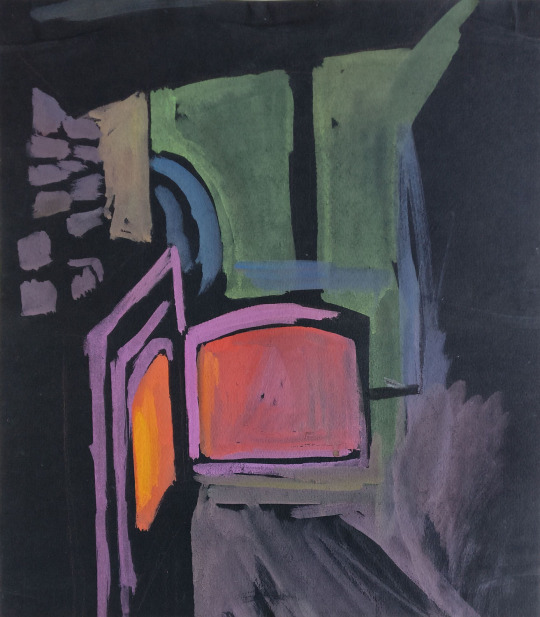
Munchalov A.P. Where gold is melted. 1963
Black paper, gouache. 37 x 32 cm
Munchalov Afanasy Petrovich (1935-2014) - Soviet graphic artist.
A bright representative of the Yakut school of graphics, which in the 1960s-1970s was one of the significant phenomena of Soviet fine arts. People's Artist of the RSFSR (1982). Honorary Corresponding Member of the Russian Academy of Arts (2012).
In 1957 he graduated from the Yakut Art School. In 1957-1963 he studied at the Graphic Faculty of the Moscow State Chemical Institute named after Surikov (workshop of E. Kibrika).
Author of a series of linocuts and lithographs "The Sun Shines for Everyone", "My North", "My Yakutia", "Thums about Time", "Victory and Peace", which have become widely known not only in the USSR, but also abroad.
Participant of exhibitions in 26 countries of the world.
The works are in the National Art Museum of the Republic of Sakha (Yakutia), State Trety-G, State Museum, State Museum of Fine Arts named after Pushkin, the State Museum of the East, in the Dresden Art Gallery.
Interesting fact:
In 2003, an art gallery named after Churapcha was opened in the Yakut village of Churapcha. A.P. Munchalova.
Painting Store
29 notes
·
View notes
Text
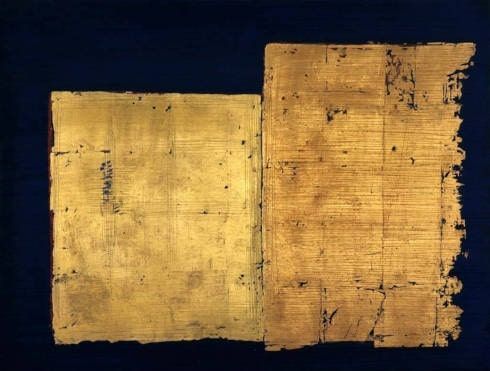
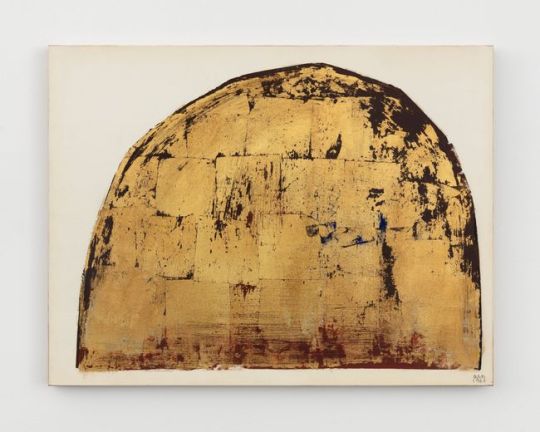

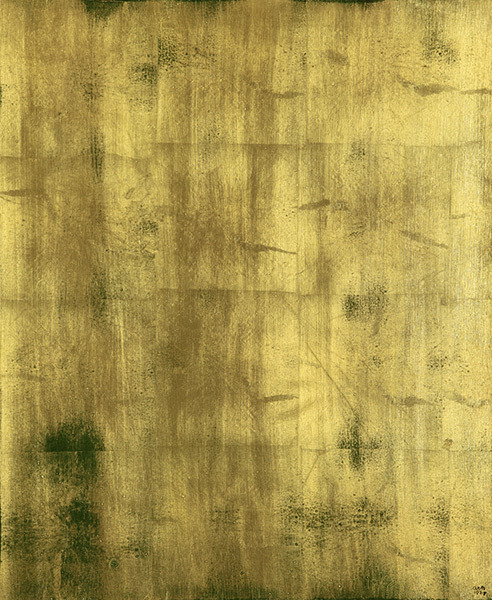
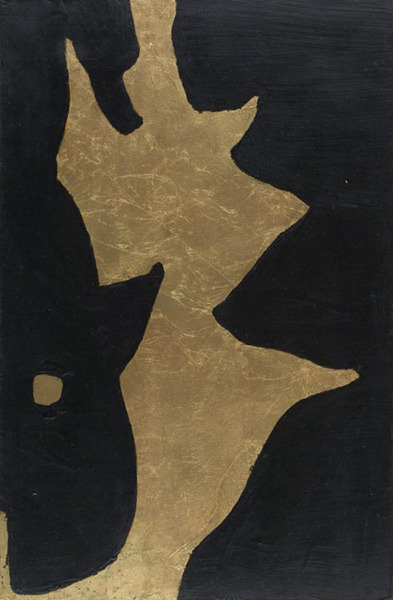
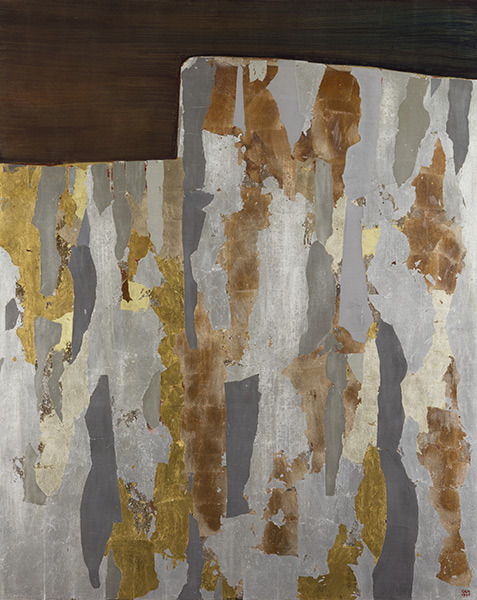
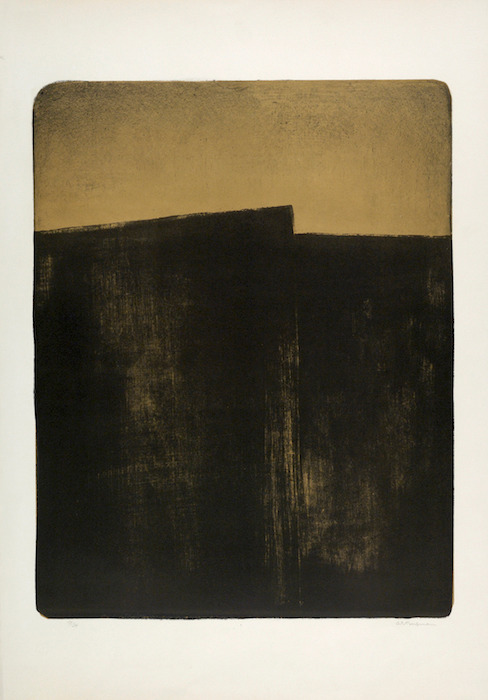
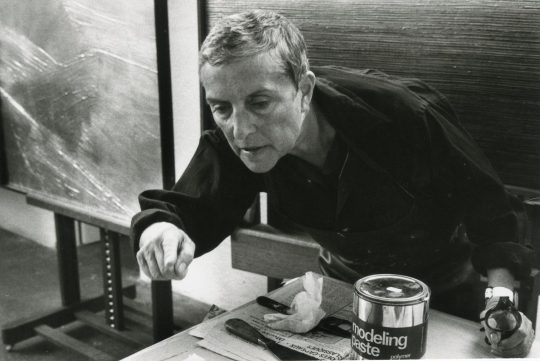
Anna-Eva Bergman (1909, Sweden - 1987 France)
Anna-Eva Bergman was born in Stockholm on May 29, 1909 to a Norwegian mother and a Swedish father. Her parents separated six months after she was born and her mother brought her to Norway where she later studied at the Academy of Fine Arts in Oslo (1927) and at the School of Applied Arts in Vienna (1928).
Bergman's writings and drawings show her sense of humor and observation, and demonstrate a virtuosic talent for drawing. Later, she would prove herself as an illustrator and journalist.In April 1929 she moved to Paris and enrolled at the André Lhote Academy where she met Hans Hartung. They got married the same year in Dresden.
From 1933 to 1934, the couple lived on the island of Menorca in the Balearic Islands. The paintings and watercolors of this period show Bergman's interest in the golden ratio and architecture, and foreshadow the simple, constructed forms of her future work.After divorcing Hartung in 1938, Bergman returned to Norway where, up to 1945, she devoted herself mainly to illustration and writing. In 1946, she committed wholeheartedly to painting again and since then she began to paint with a non-figurative approach. Line and rhythm became fundamental. This period marks a major turning point in her artistic creation: she was inventing and building a singular universe little by little. She produced her first painting in gold leaf and definitively abandoned illustration.
During the summer of 1950, Bergman took a boat trip along the Norwegian coast, visiting the Lofoten Islands and Finnmark. This trip was decisive in the evolution of her painting. With the tempera technique, she rediscovered the transparency of the landscapes and the light of the midnight sun. In 1951, following several summers spent in Citadelløya (southern Norway), Bergman produced paintings and drawings depicting the structure of rocks worn by the sea. From this series, which she called Fragments of an Island in Norway, came her first motif: stone (1952). This is a major transition in her work. Her painting then evolved towards the search for a limited number of simple motifs.In 1952, Bergman moved to Paris and found Hans Hartung again.
They remarried in 1957.In 1958, in a series of works on paper of the same format, in tempera and metal leaf, Bergman used for the first time in painting the repertoire of forms that she had developed in her work since 1952: stone, moon, star, planet, mountain, stele, tree, tomb, valley, ship, prow and mirror. These archetypal forms inspired by Scandinavian nature and the powerful Nordic light would become the central elements of Bergman's work.In 1964, Bergman and Hartung traveled by boat along the Norwegian coast, past the North Cape. For several years, Bergman would use the sketches and photographs from this trip to in her work.The couple moved to Antibes in 1973 where together they designed their house and studios which later became the Hartung-Bergman Foundation.
Bergman's work evolved towards increasingly simpler forms and a restricted color palette. She abandoned the construction of her paintings based on the golden ratio and added two themes to her vocabulary of forms: waves and rain.Anna-Eva Bergman died on Friday, July 24, 1987 at the hospital in Grasse.

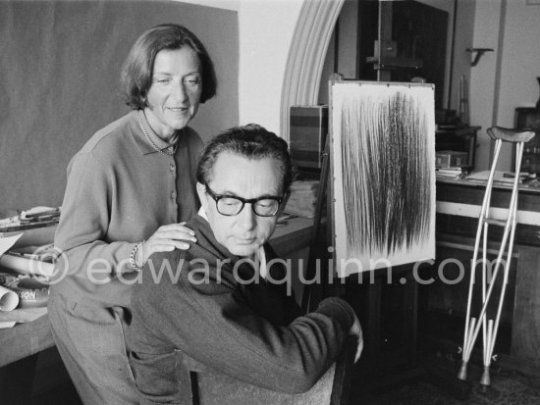
16 notes
·
View notes
Text
Loretta Lux
Loretta Lux is a German fine art photographer known for her surreal and dreamlike portraits of young children. She was born in 1969 in Dresden, East Germany and graduated from the Academy of Visual Arts in Munich in the 1990s. Lux's photographs feature young children in staged, constructed scenes, often set against vast landscapes or empty spaces to depict a sense of alienation. She combines photography, painting, and digital manipulation to create her unique portraits, which she describes as "imaginary portraits, dealing with the idea of childhood." Lux's work has been influenced by Old Master painters such as Bronzino, Velázquez, and Runge. Her portraits are not traditional portraits, but rather aim to allow the artist and viewer to "mirror themselves in the other and to reflect on their own existence." Lux's photographs have been exhibited widely and are held in the collections of major museums such as the Museum of Modern Art, Guggenheim Museum, and Art Institute of Chicago. She has received awards including the 2005 Infinity Award for Art from the International Center of Photography.
Sleeping in Class: A Tribute to Loretta Lux (May 2013)
youtube
Dead Hearts: A Loretta Lux / Stars Mashup (January 2013)
youtube
Sunday, April 21, 2024
4 notes
·
View notes
Photo


Rudolph Karl Alexander Schneider, commonly known as Sascha Schneider (1870 – 1927), was a German painter and sculptor.
Schneider was born in Saint Petersburg in 1870. During his childhood, his family lived in Zürich, but following the death of his father, Schneider moved to Dresden, where in 1889 he became a student at the Dresden Academy of Fine Arts. In 1903, he met best-selling author Karl May, and subsequently became the cover illustrator of a number of May’s books including Winnetou, Old Surehand, Am Rio de la Plata. A year later in 1904, Schneider was appointed professor at the Großherzoglich-Sächsische Kunstschule Weimar.
During this period, Schneider lived with painter Hellmuth Jahn. Jahn began blackmailing Schneider by threatening to expose his homosexuality, which was punishable under § 175 of the penal code. Schneider fled to Italy, where homosexuality was not criminalized at that time. In Italy, Schneider met painter Robert Spies, with whom he traveled through the Caucasus Mountains. He then traveled back to Germany, where he lived for six months in Leipzig before returning to Italy, where he resided in Florence. When the First World War started, Schneider returned to Germany again, taking up residence in Hellerau (near Dresden). After 1918, he co-founded an institute called Kraft-Kunst for bodybuilding. Some of the models for his art trained here.
Schneider, who suffered from diabetes mellitus, suffered a diabetic seizure during a ship voyage in the vicinity of Swinemünde. As a result, he collapsed and died in 1927 in Swinemünde. He was buried in Loschwitz Cemetery, Germany.
View more via Wordpress
14 notes
·
View notes
Photo


Master graduation exhibition “M23″ at Oktogon, Dresden Academy of Fine Arts, Germany.
27.01.-09.04.2023
2 notes
·
View notes
Text
A Canvas Of Experiences: My Erasmus Journey In Dresden
A Leap of Faith into German Expressionism
As a foreign student in France, participating in the Erasmus program was not obligatory for me. However, my curiosity and the inspiration I received from my teacher, Rainer Oldendorf, at ISBA drove me to explore this opportunity. With a deep admiration for German Expressionism, I chose to apply to the Academy of Fine Arts Dresden (HfBK). The academy’s…
0 notes
Text
Lecture Notes MON 19th FEB
Masterlist
BUY ME A COFFEE
The Academy and the Public Sphere 1648-1830
Further Reading: Johann Joachim Wicklemann (1717 - 1768) from Reflections on the Imitation of Greek Works in Painting and Sculpture
Antonie Cotpel (1661-1722) on the grand manner, from 'On the Aesthetic of the Painter'
Andre Felibien (1619-1695) Preface to Seven Conferences
Charles Le Burn (1619-1690) 'First Confrence'
More and Other
The first Academies start in Italy and then begin to spread throughout Europe. However, in this lecture we mainly focus on Paris and London. The Louvre palace, where the royal academy started, was where artists established there thought themselves as elites due to being part of the court, near the ruling and partly due to monetary reasons. (Remember: French Revolution 1793)
Now the other place was the RA, or Royal Academy in London was established to promote art and design (not to be confused with the Art and Design/Craft Movement of 1880-1920). Which focused on displaying and teaching painting and sculpture, only sometimes exhibiting drawing. If your work was exhibited, it was seen as being awarded the highest status and praise.

Jean-Baptiste Martin, A meeting of the Académie Royale de Peinture et de Sculpture at the Louvre Palace, 1712-1721, Musée de Louvre
Although the academies had strict teaching rules and students had to follow. Which meant that art during this time and created by these artists had a regulated style.
While the French salons/academies had no entry fee when they exhibited the work (bi yearly), the British did have a fee of one shilling to view the exhibit (yearly), despite trying to advertise and claiming any person was welcome. When asked and confronted about the fee, they claimed it was to keep out “improper persons” (the poor).
A selection of Art Academies:
The Academia di San Luca, Rome, 1593
The Académie Royale de Peinture et de Sculpture, Paris, 1648
The Akademie der Künste, Berlin 1696
The Royal Danish Academy of Portraiture, Sculpture, and
Architecture, Copenhagen, 1754
Academy of Fine Arts Vienna, 1688/1701/1725
Real Academia de Bellas Artes de San Fernando, Madrid, 1752
Imperial Academy of Arts, St Petersburg, 1757
The Dresden Academy of Fine Arts, 1764
Royal Academy of Painting and Sculpture, Stockholm, 1766
Royal Academy of Art, London 1768
The Academy of San Carlos, Mexico, 1783
Royal Arts Academy in Düsseldorf, (1777) 1819
Academia Imperial das Belas Artes, Brazil 1822 (based on an earlier institution)

Martin Ferdinand Quadal, Life drawing room at the Vienna academy, 1787
United in Guilds, mechanical and practical artists wanted to be recognised as artists from a scoio, utility aspect. Painting and sculpture were valued in liberal and intellectual arts.
At the beginning of the 17th century, most painters were part of the Maîtrise de Saint-Luc, a guild founded in 1391, which controlled the market and sanctioned the method of training artists by apprenticeship.
A group of artists, including the young Charles Le Brun, sought to the escape the Masters and placed themselves directly under the protection of the young King Louis XIV, who was capable of removing them from the constraints of the guild. The Academy was established in 1648.
In 1655 letters patent granted the new company the right to call itself the The Académie Royale de Peinture et de Sculpture (Royal Academy of Painting and Sculpture) and decreed that only its members could be painters or sculptors to the king or queen. The Academy moved to the Louvre, where the Galerie d'Apollon hosted the reception pieces (chef-d’oeuvre), works that had to be performed before being approved and then elected an Academician.
It oversaw—and held a monopoly over—the arts in France until 1793. The institution trained artists.

Perspective view of the hall of the Royal Academy of Painting and Sculpture at the Louvre in Paris: [print].

Sir William Chambers, Somerset House, Now the Courtauld Institute of Art and Gallery
In 1768, architect Sir William Chambers petitioned George III on behalf of 36 artists seeking permission to ‘establish a society for promoting the Arts of Design’. They also proposed an annual exhibition and a School of Design. The King agreed and the Royal Academy of Arts, the Royal Academy Schools, and what you know today as the Summer Exhibition were established.
The Royal Academicians were first based in Pall Mall, renting a gallery 30 feet long.
In 1775, Sir William Chambers won the commission to design the new Somerset House as the official residence. The Exhibition Room was 32 feet high and situated at the top of a steep winding staircase, it was described by contemporary literary critic Joseph Baretti as ‘undoubtedly at the date, the finest gallery for displaying pictures so far built’.
In the 1830s, the Academy moved to Trafalgar Square to share premises with the newly founded National Gallery, moving again in 1867 to Burlington House.
Summer Exhibition have been held every year since 1769.

Attributed to George Shepherd, The Hall at the Royal Academy, Somerset House, 1 May 1810
Before the establishment of Academies and their own openings to the public, there is no or very little actual documented art exhibitions and if there were any they were not documented. Or permanent.
These exhibitions and academies open art to the public, and gain a wider audience, mostly of the Bourgeois, who also usually commissioned the artists of the academy. Or the state did and the church – which was most common. But now individuals could now own art, which commodified art and created private ownership. This also was spurred on by art being more mobile, being painted on canvases which were easier to transport (in some cases).
The idea that came from this was: “art should be affordable”.
Another thing that came from exhibitions and wider audiences was that art became democratised, leaving it open for criticism and interpretation. Although the interpretation aspect wouldn’t be explored till around the 19th century, on wards really.
Teaching at the Academy
The Academy laid down strict rules for admission and based most of its teaching on the practice of drawing from the antique and the living model to support its teaching method and its artistic doctrine. Great importance was also given to the teaching of history, literature, geometry, perspective and anatomy.
In controlling education, the Academy regulated the style of art.
Professors of the Academy held courses in life drawing and lectures where students were taught the principles and techniques of the art. The students then looked for a master among the members of the academy, to learn the trade in their workshop. Only drawing was taught in the Academy and artists learned painting in the studios of the master, often working on his (rarely her) work.


(Left) Antoine Coysevox, Bust portrait of Charles Le Brun, Marble
(Right) Charles Le Brun, The Family of Darius before Alexander, c.1660, 164 x 260 cm
Charles Le Brun became director in 1663 and was appointed chancellor for life. The Academy was administered by a director chosen from among its members, often the King’s favoured artist.
The sketch and finish
Le Brun introduced the sketch (esquisse) to French artistic practice, where it became central to the painter’s training in both official and private academies.
The esquisse was typically a small-scale, rapidly executed work intended to preserve an artist’s première pensée, or initial conception, of a subject. It elaborated composition and colouring, avoiding detail in favour of loose forms and fluid brushstrokes.
These studies were not for exhibition, and exhibited works were expected to be highly finished, often with glassy surfaces and the elimination of brushwork.
During the later eighteenth century some began to see merit in the sketch itself, but it was in the nineteenth century with Romanticism that an ‘aesthetics of the sketch’ really developed. In the 1830s sketch came to be identified with originality and genius.

Pierre Charles Jombert, Punishment of the Arrogant Niobe by Diana and Apollo, 1772, Oil paint on canvas, mounted on board, 35.7 x 28.1 cm, Metropolitan Museum, New York
The notion of aesthetic begins developing at the time, since the academies had a monopoly on aesthetic, they chose what they liked and didn’t. Their control on who was displayed in exhibits, could ensure an artist’s success. Rejection from and by the Salons was seen as the highest insult to an artist (and their aesthetic).
In the early nineteenth century the Academy instigated landscape sketch (études) competitions.


(Left) Pierre Henri de Valenciennes, The Banks of the Rance, Brittany, possibly 1785. Oil on paper, laid down on canvas, 21.3 x 49.2 cm.
(Right) Théodore Caruelle d'Aligny, Landscape with a Cave, mid-1820s, Oil on canvas, 62.2 x 45.7cm
Here the importance of studying nature directly was emphasised through the practice of making plein air études, or small studies painted outdoors. Études generally did not serve as compositional models for particular paintings. Rather, these studies of different kinds of terrain and effects of light would be idealized or embellished by classically trained painters in landscapes produced entirely in the studio. From the time of Romanticism on, the sketch aesthetic became more-and-more central, but this was anathema to academic artists.
Exhibiting
In 1667 that the Académie Royale de Peinture et de Sculpture held the first semi-public show to display the works of its students considered worthy of royal commissions, laying a foundation the “group exhibition”. It was held in the Palais Brion in the Palais-Royal.
In 1725 the Salon moved to the Louvre and in 1737 exhibitions were opened to the public.
From 1748 group of Academicians formed a jury determining which works would be exhibited and where they were to be positioned. In 1673 the first catalogue (livret) was published. It was unillustrated until 1880. Exhibiting at the Salon was a condition of success.

Nicolas Langlois, Exhibition of works of painting and sculpture in the Louvre gallery in 1699. Detail of an almanac for the year 1700 – Etching and burin.


(Left) Giuseppe Castiglione, View of the Grand Salon Carré in the Louvre, Oil on Canvas, 1861
(Right) Alexandre Jean-Baptiste Brun, View of the Salon Carré at the Louvre, c.1880, Oil on Canvas
Key information:
France: The Louvre Palace, and other locations otherwise referred to as the Salon(s). The bigger the picture was the higher it was hung. The better and more favoured the artist the higher it was hung. Paintings of historical events were favoured and hung at the very top, all other lower in a specific order descending.
London: Portraits were positioned higher, gallery walls were still crowded all the same with frame to frame hanging, with no caption. Although you could purchase a booklet with all information and extra definitions. While there appeared less hierarchy in the London exhibitions, it still persisted just in a different form. Favoured artists got to choose where their paintings were hung. Even going as far as to developed an insult for paintings being hung so high: “the painting was skied”.
Hierarchy of genres
Inherited from Antiquity and codified in 1668 by André Félibien, secretary of the Academy, the hierarchy of genres ranked the different genres of painting assigning higher and lower significance.
At the top was history painting, called “le grand genre’: often large paintings, with mythological, religious, or historical subjects. Their function was to instruct and educate the viewer. Its purpose was moral instruction.
Portraiture, depicting important figures from the past as well as the present.
Genre scenes, the less ‘noble’ subjects: representations, generally small in size, of scenes of daily life attached to ordinary people.
The so-called ‘observational’ genres of landscape painting, animal painting and still life.
Other genres were added, such as the gallant celebrations, in honour of Antoine Watteau, which did not, however, call into question the hierarchy.
These academies were called chaotic by critics, and kaleidoscopic.
Examples of outliers:


(Left) Paulus Potter, The Bull, 1647 - 3.4 metres wide. An unusually monumental animal painting that challenges the hierarchy of genres by its size
(Right) Jean-Baptiste Greuze, The Marriage Contract (The Village Bride), 1761, oil on canvas, 92cm x 117cm. Musée du Louvre
These paintings also challenged the hierarchy of the Salon: it shows a scene that anyone could recognise.
This hierarchy was underpinned by the Ideal and the Liberal Arts.

Giogioni, Frieze in the main hall (detail), Fresco, Casa Marta, Castelfranco Veneto, c. 1510
From the Renaissance onwards artists conducted a campaign to be recognized as gentlemen, rather than workers or craftsmen. This centred on a distinction between the Liberal and the Mechanical arts.
The Liberal Arts were divided into the trivium - Grammar, Logic and Rhetoric - and the quadrivium - Geometry, Arithmetic, Astronomy and Music.
These involved imagination and intellect and were suitable activities for gentlemen.
In contrast, the Mechanical Arts were said to involve mere repetitive copying. These were activities conducted by workers and were often called ‘servile’ or ‘slavish’. They were deemed ‘mindless’ and demeaning to gentlemen.
Since the academies were open to not gentlemen, it was still believed they upheld class divisions. Examples of an artist from a lower background who rose through the ranks: J. M. W. Turner.
Ideal
Academic art, therefore, emphasised imagination and idealization and opposed copying things as they were. Abstract and mental properties were most valued. For instance, drawing was thought more important than colouring, which was often seen as superficial and feminine (cosmetics). Rather than copy a single figure ideal beauty was to be composed from the ‘best’ elements of multiple figures.
The nude was deemed more suitable, because modern dress was seen as ugly and ephemeral. Some thought the male nude more ideal.
In some senses this is a neo-Platonism, where ideal form exists in the mind of a divinity and things in the world are merely inferior copies of that ideal.

A second-century Roman marble copy of a Greek statue of Aphrodite, the goddess of beauty, crouching naked at her bath.


(Left) Artist Copying a Bust in the Royal academy at Somerset House, c.1780, Watercolour
(Right) Academies and art schools had large collections of plaster casts made from antique sculpture.
The lower genres were thought to be too close to mechanical copying, whereas history painting involved imagination, intellectual learning and work with the ideal figure. This is complex because Academic artists and theorists rejected originality for adherence to principles and precedents.
Some important studies:




David and His School

J-L David, The Lictors Bring to Brutus the Bodies of His Sons, 1789
David was a member of the Jacobin Club and friend of Robespierre. He signed the death warrant for the King. With the fall of the Jacobins he was imprisoned and his life endangered. His paintings were very open to interpretation so upper and lower classes to understand and infer meaning from them, he also had political messages in his paintings. Although quite ambiguous, it engaged in emotions also over morality like usual historical paintings.
David’s austere student Wicar suggested that landscape painters should be executed.

Jacques-Louis David, The Death of Marat, 1793, Royal Museums of Fine Arts, Brussels
Painting around this time was developing Spectacle, as a primary focus to engage people’s emotions, and a shared emotional aspect rather than just class. The Royal Academy of Painting and Sculpture was suppressed by the Convention at the request of David (August 1793) and it was in 1796 that the School of Fine Arts was founded. In 1816, The Bourbon Monarchy restored the title ‘Academy’.
In the middle of the nineteenth century Hogarth came to be seen as the founder of the British School.

Beer Street and Gin Lane, engraving, 1751
The Public Sphere
Habermas: ‘The bourgeois public sphere may be conceived above all as the sphere of private people come together as a public; they soon claimed the public sphere regulated from above against the public authorities themselves, to engage them in a debate over the general rules governing relations in the basically privatized but publicly relevant sphere of commodity exchange and social labour.'
At the Margins

Johan Joseph Zoffany, The Academicians Of The Royal Academy 1771-72, Oil On Canvas, 101.1 X 147.5 cm
Within this painting there are two paintings on the right most side, two busts of women. These are the two female founders who were not actually allowed in the Academy. However, that’s not to say that women weren’t painting and hosting their own private events, even if they couldn’t be critics and artists academically, so they easily fell into obscurity.

Republican Madame Roland
Feminist historians have suggested that the Salons hosted by women were an essential part of this culture of debate.
In 18th century France, salons were organised gatherings hosted in private homes, usually by prominent women. Individuals who attended often discussed literature or shared their views and opinions on topics from science to politics. The different Salons belonged to artistic and political factions.

Elisabeth-Louise Vigée Lebrun, Self-portrait in a Straw Hat, 1782
#art gallery#art#writing#art tag#artwork#paintings#essay#art show#art exhibition#art history#ms paint#painting#france#paris#salon#beauty salon#drawing#drawings#sketch#sketchbook#writers#writers and poets#writers on tumblr#creative writing#writeblr#writerscommunity#writer community#writers block#female writers#writer
0 notes
Text
Paintings

Paintings by Years

2023Merid award for the Kite Prize for Contemporary Art.

2022
Solo Exhibition at Ro2, and art residency at Ro2. Exploration of Sumi ink on paper and panel.

2021

2020
Two person exhibition at Mesquite Art Center, solo exhibition at Execute Project.

2019
Wow! My first solo exhibition in the museum - Brownsville Museum of Fine Art in Texas! Another solo show with my artworks at Hopkins Center for the Arts! Futhermore, first group show in Dallas, TX.
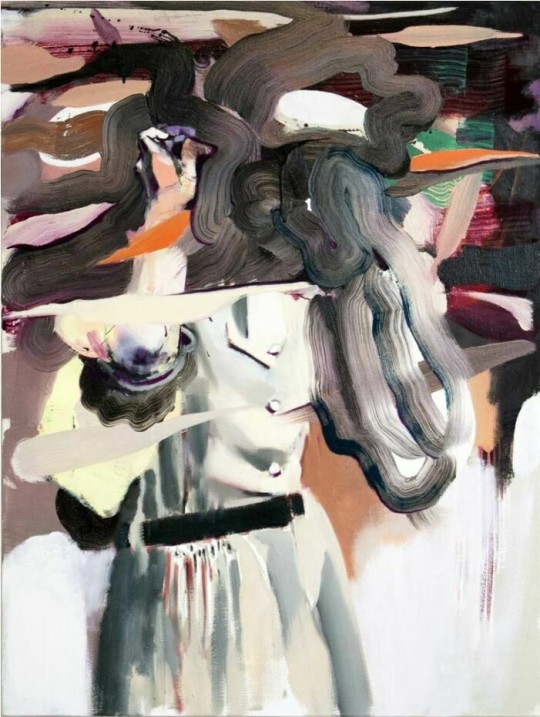
2018
I was awarded with three months artist-in-residency at GoggleWork, Center for the Arts in Reading, PA. Shortly after I had my solo exhibition 'Ten Starts From One', Mildred M. Cox Gallery, Fulton, MO, US.
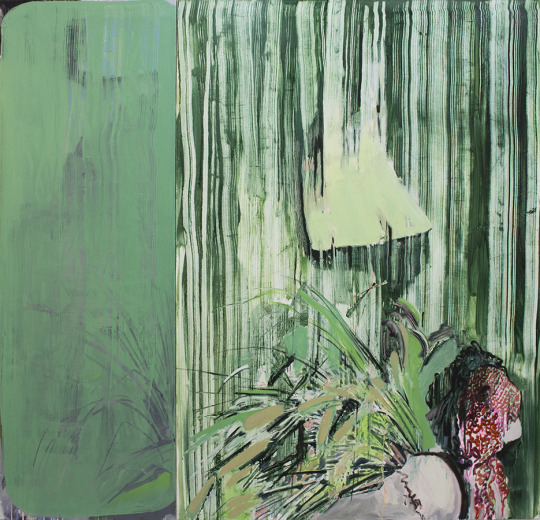
2017
My paintings in Miami for the exhibition at Rosemary Duffy Larson Gallery. I received grant from Idaho Commission for the Arts.First Place for Interstate Group Exhibition, CWU Sarah Spurgeon Gallery,.

2016
I had my first solo exhibition in the United States. I was awarded with a fellowship from Fondazione Per'l Arte in Rome, Italy. I had my firstart pubication with my paintings only.

2015
Paintings I made this year were exhibited in the UK and other place. Developing new body of paintings, improving my skills, reviewing what next and where I want to go with my work
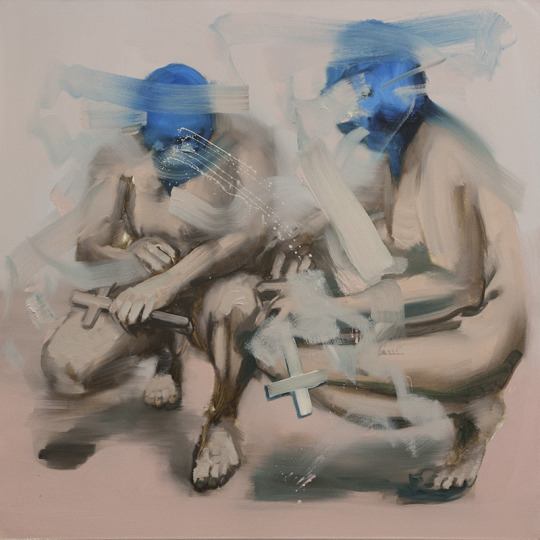
2014
I had two solo exhibition in Bogota, Colombia. I also think that I made amazing paintnig that year. I also settled down in the United States. Iy was a big change in my life.

2013
First part of this year I was finishing Dresden scholarship and shortly after coming back to Manchester, UK, I visited the United States where I got my second art studio. In the Fall I had solo exhibition in Madrid, Spain.
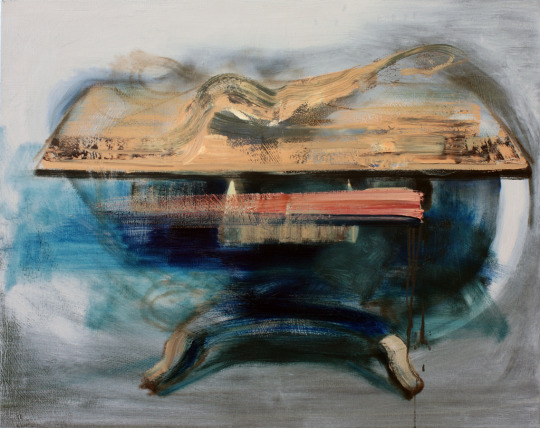
2012
These paintings I made during my Master Course at Manchester School of Art. This year I won national competitions in the UK. I also was awarded with scholarship to Dresden Academy of Art in Germany.

2011
See my paintings I created in 2011 while I still was at Manchester School of Art, Manchester Metropolitan University, UK. This year I also got my first studio at Rogue Studios in Manchester.
Selected Paintings Views From Solo Exhibitions







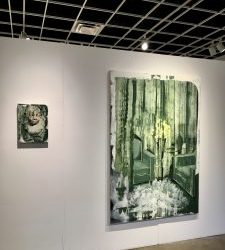
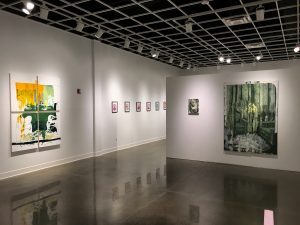
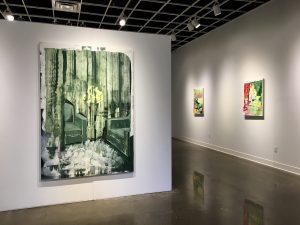

Read the full article
0 notes
Text

#repost @_johannaseidel Johanna Seidel (Germany, 1993-). Always, 2022, oil on canvas, 19 3/5 x 23 3/5 in. Included in the 2022 show "If it's not baroque, don't fix it" at the Tchotchke Gallery in Brooklyn, New York City, USA, in 2022.
1 note
·
View note
Text

Philosophen (Philosophers), 1918,
Richard Müller (1874, Tschirnitz/Černýš - 1954, Dresden);
Etching, 37,7 x 54,3 cm, private collection; via Invaluable.com
Richard Müller, a celebrated painter and professor at the Dresden Academy of Fine Arts from 1900 on (and one of George Grosz’s teachers), may have also been the one who organized the first "degenerate art" exhibition (Schandausstellung - Shame Exhibition) in Dresden, in 1933– even if not, he publicly embraced it. Müller, who was the rector of the Academy between 1933-35 and a Nazi party member from 1933 on, apparently played a role in the suppression and public smearing of his colleagues.
Fritz Löffler (1899 - 1988), Otto Dix’s biographer claimed it was Müller, not the Nazis, who got Dixfired from the Dresden Academy of Fine Arts, then expelled his pupils, and erased Otto Dix's, Oskar Kokoschka's, and even the late Otto Hettner's namesfrom the tutors’ honorary plaque at the academy. However, there are reported “contradictions in accounts by Fritz Löffler, as to whether Muller was involved in the 1933 Degenerate Art exhibition in Dresden”. Furthermore, according to Wikipedia, Löffler also joined the Nazis after 1933, so if that's the case one may wonder how reliable he really was.
“In September 1933, Müller organized a local exhibition of contemporary artists, who were exposed to public mockery in the Dresden City Hall as representatives of 'Cultural Bolshevism'. In addition to works by Klee, Kokoschka and others, there were two great works by Dix: War Cripples (1920)and The Trench (1923)*." *2 lost works that may have been destroyed by the Nazis.
George Grosz, on Richard Müller:
"…An unbearable, authoritarian and intolerant man against any avant-garde (during a lesson, Müller literally declared that ‘Nolde sticks his f*nger up his a*se and smears it on the paper’)."At the same time, "Grosz remembered Müller as a passionate teacher and appreciated his qualities as a painter."
In 1944, the Reichsministerium included Müller in the so-called 'Gottbegnadeten-Liste' (God-Gifted-List)of The Third Reich’s favored artists who were excused from military service.
Apparently, Müller, a fierce anti-expressionist, had an impact on New Objectivity, because of his stunningly detailed and realistic (or perhaps still and emotionless) style (check the comments). He lived his final years in East Germany, disgraced, professionally ostracized, and largely forgotten because of his stance during Nazism, although his moral and artistic decline seem somehow synchronized anyway (given the fact that he was considered one of the most promising artists in his youth).
0 notes
Text





As I mentioned, they went to Dresden for two days, leaving me all alone. We’ll not exactly alone. My super nice dog walker stayed with me. But some of the other sights they saw included the Opera house, the academy of fine arts also known as the lemon squeezer building and perhaps the
Most impressive was the swinger. It holds 5 different museums. The building complex was under construction, and the famous gardens were removed. But the buildings they could see were really stunning.
While they were there, there was a piano concert right in the square where they were staying. It was part of a summer series of performances. They said they ate a lot of ice cream because it was hot and Shari finally got her traditional German meal of schnitzel.
I sure hope mom takes me on one of these trips.
0 notes
Text







HAMIDREZA YARAGHCHI (B. 1984, Tehran, Iran) lives and works in Berlin, Germany. He graduated from the Academy of Fine Arts Dresden in 2020.
27 notes
·
View notes
Text
GERHARD RICHTER
1932-presente


P2 Haggadah, 2014
C-Print
100 × 100 cm

Flow (P16), 2016
C-print mounted on alu-diasec
100 × 200 cm

Woman Descending the Staircase (Frau die Treppe Herabgehend), 1965
Oil on canvas

Tulips (P17), 2017
Diasec-mounted giclée print on aluminium
36 × 41 cm
#gerhard richter#richter#r#color#pintura#oleo#abstracto#figurativo#Alemania#photo blur#color chart painting#expresionismo#expresionismo abstracto#moma#wolf prize#Arnold bode prize#Dresden academy of fine arts#arte conceptual#golden lion
1 note
·
View note